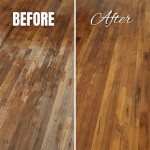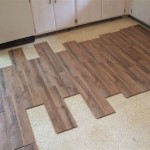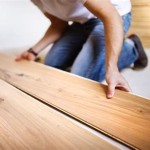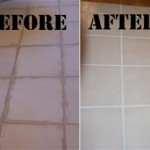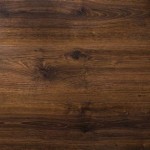How To Level Plywood Subfloor For Vinyl Plank Flooring Installation
Installing vinyl plank flooring can significantly enhance the aesthetics and functionality of a living space. However, a successful and long-lasting vinyl plank installation hinges on the quality and preparation of the subfloor. Unevenness in a plywood subfloor can lead to a variety of problems, including visible imperfections, premature wear and tear of the vinyl plank, and potential issues with the locking mechanisms of the planks.
This article provides a comprehensive guide to leveling a plywood subfloor in preparation for vinyl plank flooring installation. The process involves assessing the subfloor's condition, identifying areas requiring leveling, and employing appropriate techniques to achieve a smooth, even surface. Proper execution of these steps ensures a professional-quality flooring installation and extends the lifespan of the vinyl plank.
Key Point 1: Assessing the Plywood Subfloor's Condition
The initial step involves a thorough inspection of the existing plywood subfloor. This inspection aims to identify any existing damage, unevenness, and potential underlying problems that could compromise the integrity of the finished floor. The assessment should encompass the following aspects:
Visual Inspection: Begin by carefully examining the entire surface of the plywood. Look for signs of water damage, such as discoloration, staining, or swelling. Water damage can weaken the plywood and lead to future problems. Also, identify any areas where the plywood is delaminating, meaning the layers are separating. Delamination indicates significant structural weakness and necessitates repair or replacement.
Check for Loose or Squeaky Areas: Walk across the entire subfloor, paying close attention to any areas that feel loose, bouncy, or emit a squeaking sound. These areas typically indicate that the plywood is not properly secured to the floor joists below. Loose plywood needs to be re-secured with screws or nails to prevent movement and potential damage to the vinyl plank flooring.
Identify Protruding Fasteners: Thoroughly inspect the subfloor for any nails or screws that are protruding above the surface. These fasteners can create bumps and unevenness that will be visible through the vinyl plank. Use a hammer to drive protruding nails back into the plywood or remove them entirely and replace them with screws that sit flush with the surface. Ensure the new fasteners are properly countersunk.
Measuring Unevenness: To accurately assess the extent of any unevenness, employ a long, straight edge (at least 6 feet in length) in conjunction with a level. Place the straight edge on the subfloor and check for gaps between the straight edge and the surface. Use the level to determine the severity of any dips or high spots. Mark the locations of these imperfections with a pencil for later reference.
Moisture Content Testing: High moisture content in the plywood can lead to problems with adhesion and can cause the vinyl plank flooring to warp or buckle. Use a moisture meter to measure the moisture content of the subfloor. Refer to the vinyl plank manufacturer's recommendations for acceptable moisture levels. If the moisture content is too high, allow the subfloor to dry thoroughly before proceeding with any leveling work. This may require the use of dehumidifiers or fans.
Key Point 2: Methods for Leveling a Plywood Subfloor
Once the subfloor has been thoroughly assessed and any underlying issues addressed, the next step is to implement the appropriate leveling techniques. The choice of method depends on the severity and type of unevenness present. Three common methods for leveling a plywood subfloor are described below:
Self-Leveling Compound: Self-leveling compound is a cement-based mixture that is poured or pumped onto the subfloor and allowed to spread and level itself. This method is particularly effective for addressing larger areas of unevenness or for filling in shallow depressions. Application requires careful preparation and adherence to the manufacturer's instructions.
Subfloor Patching Compound: Subfloor patching compound is a thick, trowelable material used to fill in smaller imperfections, such as cracks, gouges, or areas around nail holes. It is also beneficial for feathering out edges of self-leveling compound or plywood shims. Patching compound dries relatively quickly and provides a smooth, durable surface for the vinyl plank flooring.
Sanding High Spots: For minor high spots or ridges in the plywood, sanding can be an effective leveling technique. Use a belt sander or orbital sander with a coarse-grit sandpaper to remove the excess material. Be careful not to over-sand, as this could create dips in the plywood. After sanding, clean the surface thoroughly to remove any dust or debris.
Detailed Procedure for Self-Leveling Compound Application: Before applying self-leveling compound, it is crucial to thoroughly clean the subfloor. Remove all dust, debris, and any loose particles. Vacuum the entire area and then wipe it down with a damp cloth. Prime the subfloor with a primer recommended by the self-leveling compound manufacturer. This primer will ensure proper adhesion of the compound to the plywood. Mix the self-leveling compound according to the manufacturer's instructions. Use a mixing drill with a paddle attachment to ensure a consistent and lump-free mixture. Pour the mixed compound onto the subfloor, starting at the lowest point. Use a gauge rake or smoothing tool to spread the compound evenly and ensure that it flows into all areas. Allow the self-leveling compound to dry completely according to the manufacturer's instructions. This may take several hours or even days, depending on the specific product and ambient temperature and humidity.
Detailed Procedure for Subfloor Patching Compound Application: Clean the area to be patched thoroughly. Remove any loose debris or dust. Apply a thin layer of primer to the area to be patched to enhance adhesion. Use a putty knife or trowel to apply the patching compound to the imperfection. Overfill the area slightly to allow for shrinkage during drying. Smooth the patching compound to create a seamless transition with the surrounding subfloor. Allow the patching compound to dry completely. Sand the patched area smooth with fine-grit sandpaper to ensure a perfectly even surface.
Key Point 3: Achieving a Smooth and Even Surface
Regardless of the leveling method employed, the ultimate goal is to achieve a smooth and even surface that is free of any imperfections that could compromise the installation of the vinyl plank flooring. This requires careful attention to detail and a commitment to thoroughness.
Sanding and Smoothing: After applying self-leveling compound or patching compound, it is often necessary to sand the surface to further refine the levelness and smoothness. Use a fine-grit sandpaper to remove any minor ridges or imperfections. Sand in a circular motion to blend the patched areas seamlessly with the surrounding subfloor. Vacuum the entire area thoroughly to remove any sanding dust.
Applying a Second Coat (If Necessary): In some cases, a single coat of self-leveling compound or patching compound may not be sufficient to achieve the desired level of smoothness. If there are still noticeable imperfections, consider applying a second coat. Follow the same procedures as for the first coat, ensuring that the subsequent layer is applied evenly and allowed to dry completely.
Final Inspection: After completing all leveling and sanding work, conduct a final inspection of the subfloor. Use the straight edge and level to re-check for any remaining unevenness. Run your hand across the surface to feel for any bumps or imperfections. Address any remaining issues before proceeding with the vinyl plank flooring installation. A properly leveled subfloor is essential for the long-term performance and appearance of the finished floor.
Ensuring Proper Adhesion: Before installing the vinyl plank flooring, ensure that the subfloor is clean, dry, and free of any contaminants that could interfere with adhesion. Vacuum the entire area thoroughly and then wipe it down with a damp cloth. Follow the vinyl plank manufacturer's recommendations for adhesive application. Use the appropriate type of adhesive and apply it evenly to the subfloor. Allow the adhesive to tack up according to the manufacturer's instructions before installing the vinyl planks.
Proper Ventilation and Environmental Considerations: When working with self-leveling compounds, patching compounds, and adhesives, it is essential to ensure adequate ventilation. Open windows and doors to allow fresh air to circulate. Wear appropriate personal protective equipment, such as gloves, a dust mask, and eye protection. Dispose of any waste materials properly according to local regulations.
By carefully following these steps, homeowners and contractors can effectively level a plywood subfloor, creating a solid foundation for a beautiful and durable vinyl plank flooring installation. This meticulous preparation will minimize the risk of future problems and ensure the longevity of the flooring.

How To Prep Wood Subfloor For Luxury Vinyl Plank Flooring Beginners Fix High And Low Spots

How To Plywood Floor Leveling For Laminate Flooring Nail Down Installation Diy Mryoucandoityourself

Floor Prep For Beginners Installing Vinyl Plank

Subfloor Preparation For Flawless Flooring Installation

How To Level A Plywood Or Osb Subfloor Using Asphalt Shingles Construction Felt

How To Prepare The Floor For Vinyl Plank Installation

How To Level A Plywood Or Osb Subfloor Using Asphalt Shingles Construction Felt

20 Tips For A Great Vinyl Plank Flooring Installation

How To Prepare A Wood Sub Floor Builddirect

10 Beginner Mistakes Installing Vinyl Plank Flooring
See Also
